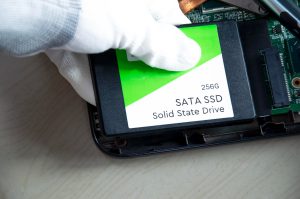One minute your server is running as expected. The next, it’s completely unresponsive. Whether it happens during peak hours or quiet times, a sudden server failure can catch anyone off guard. It can disrupt work, stop access to important files, halt email, and even affect websites tied to the system. When that happens, the goal is simple: get things running again without making anything worse.
While it’s easy to feel overwhelmed in the moment, knowing what steps to take right away makes a big difference. Acting carefully in those first few minutes could save hours of recovery time. It can also protect your data and equipment from bigger damage. If your server stops working with no warning, staying calm and focused helps you zero in on the problem without rushing into risky solutions.
Identifying Symptoms Early
Before pulling plugs or rebooting anything, it helps to confirm what’s really going on. Servers can slow down, restart on their own, or freeze from temporary issues. But when there’s no response at all, no lights, or no sign of activity, you might be looking at something more serious. The way the server stops working gives clues about the cause.
Here are common signs something’s wrong:
– The server won’t boot or complete startup
– You can’t access it through the network
– Airflow is normal, but there are no lights or system fans
– The system powers up, but then shuts back down
– Error messages pop up when trying to log in or load the interface
– You hear repeated beeping or strange noises from the hardware
Any of these issues might be physical, like a hardware problem, or logical, such as corrupted data or failed updates. The longer the system sits frozen or struggling, the more chance there is of data errors or losses building up. For example, in one office setup, a server shut off due to overheating and wouldn’t turn back on. By spotting the early signs of trouble, like random restarts and fan noise, they could have prevented the shutdown.
If the server is part of your daily operations, even a short breakdown can stack up problems fast. Once you know what kind of failure you’re dealing with, it’s easier to map out a plan without guessing.
Initial Steps to Take After the Server Stops
When the server goes down, don’t panic. You don’t have to fix everything at once. Start with small, safe actions to see if the problem is simple to solve or if it’s something more.
Go through the following steps one by one:
1. Power cycle the server
Turn the server off fully, wait a few seconds, then power it on again. Sometimes a quick restart clears out temporary errors caused by overheating or voltage spikes.
2. Inspect electrical connections
Make sure all power cables are firmly connected. If it plugs into a power strip, check if the strip is working. Try connecting directly to a known-good outlet just to be sure.
3. Check for warning lights and sounds
Some servers have built-in lights or beeping codes to show what might be wrong. These often show overheating, memory problems, or drive failure. Check the user manual of your model to match the signs.
4. Look at the display or monitor
If the server has a direct output, connect a screen and keyboard. This helps you see if it begins any part of the startup process or if it shows errors right away.
5. Review the network equipment
If your server runs over a network, you’ll also want to inspect the modem, router, or switch it connects through. A working server might still seem dead if its communication path breaks.
If nothing obvious stands out or restarting doesn’t bring any life back, it’s time to dig deeper. The issue might sit below the surface, and continuing without more information could make things worse. The next step is to examine the system logs and settings to find clues.
Troubleshooting the Problem from the Inside
Once you’ve ruled out external power and network problems, the next layer is software and system health. Start by connecting directly to the server with a monitor and keyboard if they’re not already hooked up. This lets you catch any early-post startup messages or errors that don’t show across the network.
If the server gets to the login screen but can’t boot fully, check the system logs. These could hold warnings related to failed drives, system crashes, corrupt boot partitions, or update conflicts. Scan for event timelines to see what the last successful action was before the failure happened. This often points to the root of the issue.
Things to watch for include:
– Recent software updates or patches
– Configuration changes to services or user accounts
– Alerts connected to storage volumes or memory use
– Any unusual disk or processor activity leading up to the outage
If you can boot into safe mode or access a maintenance shell, you’ll sometimes be able to run simple tests. Commands to check drive health, diagnostic scans for memory, or kernel logs can help isolate the issue. But if the server doesn’t reach that point or starts and stops mid-boot, you may be looking at drive corruption or deeper system file problems. At that point, it’s best not to force a restart loop. Repeated power cycling without resolving the core issue can further damage data.
Knowing When You Need Professional Help
Some problems just aren’t safe to fix without deeper tools or knowledge. If your server won’t power on at all, starts making strange clicking or scraping sounds, or shows signs of burned components, stop trying to restart it. Physical damage to drives, fans, or circuit boards should only be checked by professionals. Even small missteps can cause permanent data loss.
Here’s when you should bring in help:
– Hardware won’t initialise or the system powers off immediately
– Drives don’t spin up or produce clicking or ticking sounds
– Startup halts with missing boot device errors, even when drives are present
– BIOS settings won’t save or hardware isn’t being detected
– RAID settings look misaligned or arrays appear to be missing
– Multiple software errors show on screen, even after restarts
It might be tempting to try swapping out components or reinstalling the OS, but unless you’re certain the data is backed up and safe, that gamble rarely pays off. If the server houses important files, archived records, or customer data, it’s a much safer move to hold off and speak with a data recovery specialist.
Getting Back on Track After Recovery
Once your system is stable again, now is the time to think about how to stop the same issue from happening twice. Too often, servers go right back into service set up exactly the way they were before. That leaves everything just as fragile.
Treat a major failure as a chance to rebuild smarter. Ask the following:
– Were the server fans clogged or dusty?
– Were updates tested before they were installed?
– Is the power source stable and surge-protected?
– Was the most recent backup tested and usable?
If the crash was triggered by software conflicts, it may be worth isolating any sensitive software into containers or virtual machines. If heavy tools are running on outdated hardware, then scheduling upgrades is a smart preventative step. And if slowdowns happened before the crash, they’re likely to happen again. Make it a habit to document these moments and take action while warning signs are still small.
Create a simple record of what was changed during recovery. That might include new drives, bios resets, OS repairs, or offline maintenance. If something breaks again later, having clear notes will save a huge amount of confusion and wasted time.
Keeping Servers Healthy With Small Habits
Just because a problem was fixed once doesn’t mean it won’t repeat. Running a server is less about perfection and more about consistency. Good habits will do more for your system than any emergency patch or rush fix.
Start with these simple routines:
– Check system logs once a week for red flags
– Run basic updates once a month and test them in staging environments
– Store backups both onsite and in the cloud, and test their recovery
– Review who can access what and remove old or inactive accounts
– Watch the network for low-level odd behaviour like failed login attempts
Even if you don’t have a full tracking system in place, a shared document or spreadsheet is enough. Mark down restarts, freezeups, and any changes made. The patterns become much easier to spot once they’re recorded somewhere.
Servers rarely just fail out of the blue. There’s almost always a warning or symptom in advance. Learning to catch those early and respond calmly is the key to avoiding long outages, expensive recovery work, and unnecessary stress. A strong system isn’t one that never breaks—it’s one that’s ready when it does.
When server issues seem insurmountable, and you’re worried about losing critical data, professional help makes all the difference. At TeraDrive, our expertise with data recovery services ensures you can recover vital information quickly and effectively. Whether dealing with severe hardware problems or complex software failures, trust us to help restore your server’s full functionality. Learn more about how our services can safeguard your valuable data.





